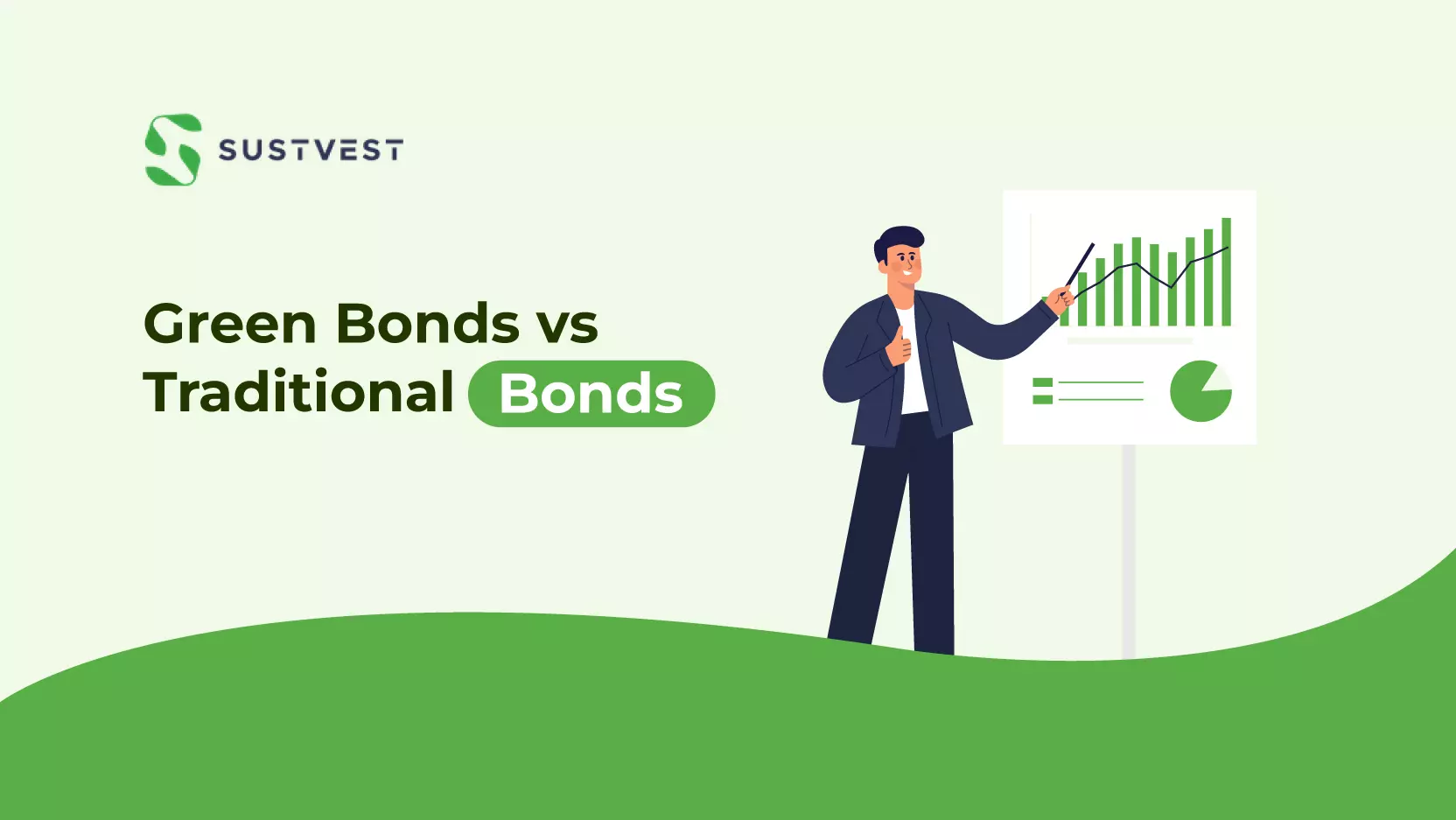In recent years, environmental and social consciousness has driven the emergence of sustainable finance solutions aimed at addressing global challenges such as climate change and environmental degradation. Among these solutions, green bonds have gained significant traction as a financial instrument that promotes environmentally responsible projects and initiatives.
This article will help you explore the key differences and similarities between green bonds vs traditional bonds, their respective impacts on the financial and environmental landscapes, and the implications for investors and issuers.

What are Traditional Bonds
Traditional bonds are fixed-income securities issued by governments, municipalities, or corporations to raise capital for various projects or operational purposes. When an investor purchases a bond, they are essentially lending money to the issuer for a specified period, during which the issuer pays interest (coupon payments) to the investor at regular intervals until the bond’s maturity, at which point the principal amount is repaid.
What are Green Bonds
Green bonds are a specialized subset of traditional bonds designed explicitly to finance environmentally sustainable projects and initiatives. These projects often focus on areas such as renewable energy, energy efficiency, green buildings, sustainable water management, and climate change adaptation. The central objective of green bonds is to mobilize capital for projects that have positive environmental and social impacts, thus fostering the transition to a more sustainable and low-carbon economy.
What are the Differences between Green Bonds and Traditional Bonds
- Use of Proceeds
The most prominent difference between green bonds and traditional bonds lies in the use of the proceeds. Green bonds are exclusively earmarked for environmentally friendly projects, while traditional bonds may be used for a broader range of purposes, which may or may not align with sustainability objectives.
- Project Evaluation and Transparency
Green bonds undergo a rigorous evaluation process to ensure that the projects funded meet predefined environmental standards and criteria. Transparency is paramount in green bonds, as issuers are required to disclose detailed information on the use of proceeds, the environmental benefits achieved, and the impact assessment of the funded projects. This level of transparency is not as prevalent in traditional bonds.
- Market Segmentation
The green bond market represents a niche segment within the broader bond market. While the green bond market has experienced remarkable growth in recent years, it remains smaller compared to the vast universe of traditional bonds.
- Investor Demand
Investor demand is a critical driver for the growth of the green bond market. Many institutional investors and asset managers are increasingly incorporating environmental, social, and governance (ESG) factors into their investment decisions, making green bonds an attractive option for those seeking to align their portfolios with sustainability goals.
Ecological and Social Benefits of Green Bonds
- Environmental Benefits of Green Bonds
Green bonds play a vital role in promoting sustainability by financing projects that reduce greenhouse gas emissions, promote renewable energy adoption, enhance resource efficiency, and protect natural ecosystems. These investments contribute to combating climate change and mitigating its adverse effects.
- Social Benefits of Green Bonds
Beyond their environmental impact, green bonds can also have positive social outcomes. Projects financed by green bonds may lead to job creation, improved living standards, and enhanced access to essential services in communities that benefit from sustainable infrastructure developments.
Pros and Cons of Investing in Green Bonds
- Advantages of Green Bonds
a. Environmental Stewardship: Green bonds contribute to the development of a more sustainable economy, fostering environmentally responsible initiatives.
b. Access to Capital: Issuers of green bonds can attract a new pool of investors focused on sustainable investment opportunities.
c. Corporate Reputation: Companies that issue green bonds can enhance their corporate reputation by showcasing their commitment to sustainability.
- Challenges of Green Bonds
a. Standardization: The lack of standardized guidelines and definitions for green projects can lead to challenges in assessing the environmental impact and credibility of certain green bonds.
b. Reporting and Verification: Robust reporting and verification mechanisms are essential to ensure the credibility and transparency of green bond issuers, requiring resources and expertise.
c. Greenwashing Risks: Some issuers may attempt to label bonds as “green” without adhering to proper sustainability criteria, potentially leading to greenwashing and undermining the credibility of the market.
VI. Risk and Return Profile
- Risk in Green Bonds
Green bonds do not inherently carry higher or lower credit risk compared to traditional bonds. The risk associated with green bonds primarily depends on the creditworthiness of the issuer and the specific characteristics of the funded project.
- Return in Green Bonds
In terms of financial returns, green bonds generally offer yields similar to traditional bonds with similar credit ratings and maturities. The return on investment is influenced more by the issuer’s credit quality and prevailing market interest rates than the green nature of the bond.
Conclusion
Green bonds represent a significant advancement in sustainable finance, providing a mechanism for raising capital to support environmentally responsible projects. The key differentiators between green bonds vs traditional bonds lie in their use of proceeds, project evaluation, market segmentation, and investor demand. While green bonds offer numerous advantages in advancing environmental and social objectives, challenges such as standardization, reporting, and greenwashing require continuous attention from market participants.
As the green bond market continues to grow, it will play a vital role in accelerating the transition to a sustainable global economy. Investors and issuers must work collaboratively to enhance transparency, credibility, and the impact of green bonds to create a positive environmental legacy for future generations. Check out SustVest today to start your journey with investing in green bonds.

Founder of Sustvest
Hardik completed his B.Tech from BITS Pilani. Keeping the current global scenario, the growth of renewable energy in mind, and people looking for investment opportunities in mind he founded SustVest ( formerly, Solar Grid X ) in 2018. This venture led him to achieve the ‘Emerging Fintech Talent of the Year in MENA region ‘ in October 2019.




